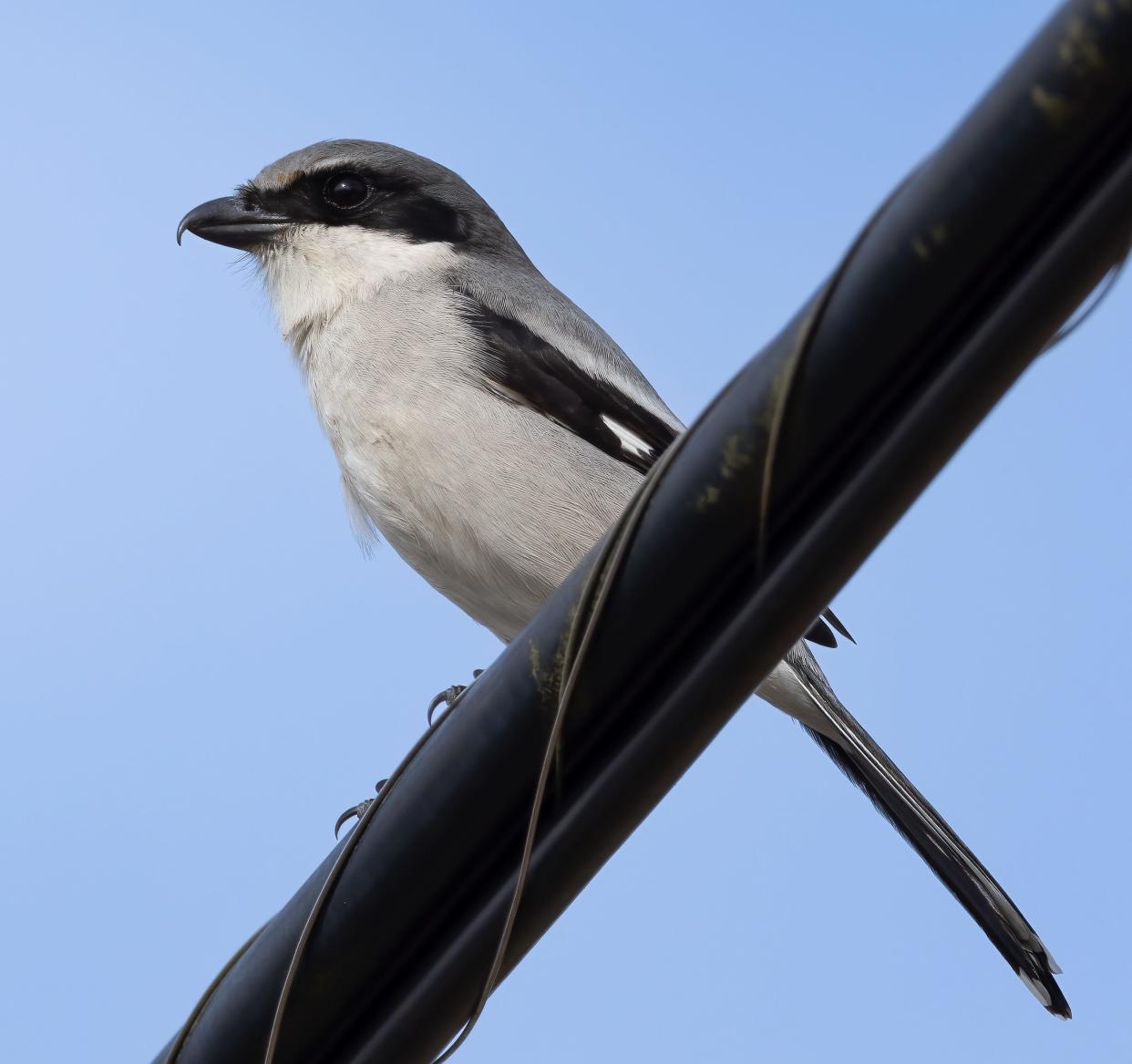Nature: Predatory loggerhead shrikes no longer common in the Buckeye State

- Oops!Something went wrong.Please try again later.
Vlad the Impaler, or Vlad III, was prince of Wallachia three times between 1448 and 1477. Wallachia was a region of Europe that eventually become present-day Romania. A ferocious warrior, Vlad was known for impaling vanquished enemies on large stakes. He is said to be the inspiration for Count Dracula, who debuted in Bram Stoker’s 1897 novel Dracula.
A feathered Vlad is among our avifauna, and is every bit as fearsome as Stoker’s protagonist. This animal is also known for impaling its victims on stakes.
The loggerhead shrike is one of only two regularly occurring shrikes in the U.S., although there are 34 species worldwide. While closely related to songbirds known as vireos, and jays and crows, the predatory behavior of shrikes conjures visions of raptors. Shrikes are bestowed with thick bills tipped with intimidating hooked tips, reminiscent of a hawk.
Loggerhead shrikes make good use of those bills, earning their nickname “butcherbird”. Highly predatory, a hunting shrike scans for prey from a roadside wire, shrub or other prominent perch. Victims might include insects such as grasshoppers or large beetles, mice, voles or other small mammals, various birds and when available, amphibians and reptiles.

When potential kills are spotted, the shrike launches itself and flies rapidly toward it. When the target is reached, the shrike enfolds the prey with its wings and quickly and accurately bites and severs the cerebral vertebrae, dispatching the victim. The quick kill is merciful, as the creature surely would not want to suffer through Step B.
After a successful kill, the shrike flies its victim to its impaling ground. This might be the thorns of a hawthorn tree, a barbed wire fence or other spiny projections. Upon arrival, the shrike skewers the prey on the spike where it will remain until the bird is ready to eat. When the dinner bell sounds, the shrike commences to rip parts from the prey, eating manageable portions. Dismemberment dining is not for the faint of heart, but serves the shrike well.
More: Nature: Short-eared owls wing it to Ohio in larger numbers this winter
Evolution of impalement in shrikes relate to their feet. As songbirds, their feet and legs are not nearly as proportionately powerful as raptors such as falcons, hawks and owls. Thus, the use of sharp tools to hold the prey like a sausage on a spit. As shrike legs are relatively short, it may also be that it’s difficult for them to use their feet to hold victims as a raptor would.
Nesting season means the creation of an especially grisly larder for loggerhead shrikes. To ensure the incubating female is adequately provisioned, the male shrike keeps an ample supply of impaled prey nearby. This continues and is even ramped up after the nestlings hatch. Imagine a thorny hawthorn tree bedecked with the skewered bodies of mice, sparrows, big insects, small snakes and others.
More: Nature: Short-eared owls wing it to Ohio in larger numbers this winter
Although I’ve admittedly waxed anthropomorphic about the loggerhead shrike’s behavior, their habits are fascinating. Smaller than the familiar American robin, shrikes nonetheless are imbued with aggression far outstripping their size. One was once seen chasing a green heron, a bird that outweighs it by five times. I imagine the shrike would have tried to kill it if it had caught up to it. Shrikes regularly capture prey their size or larger, such as cardinals and thirteen-lined ground squirrels.
I made the accompanying photo near the Okefenokee National Wildlife Refuge in southern Georgia during a recent trip. Loggerhead shrikes remain fairly common in that region, but overall the block-headed butcherbird is in significant decline. It once was fairly common in much of Ohio, having expanded northward into the state after widespread deforestation created suitable open brushy habitat.
By the 1930’s, declines were evident and by the 1990s shrikes were nearly gone from Ohio. Today, it is a major rarity and it’s likely no nesting pairs remain. Primary reasons for their disappearance are elimination of habitat due to industrial agriculture, lack of management for shrublands favored by shrikes, and increased use of pesticides and other chemical contaminants.
Naturalist Jim McCormac writes a column for The Dispatch on the first, third and fifth Sundays of the month. He also writes about nature at www.jimmccormac.blogspot.com.
This article originally appeared on The Columbus Dispatch: Nature: Ferocious loggerhead shrikes are highly predatory

